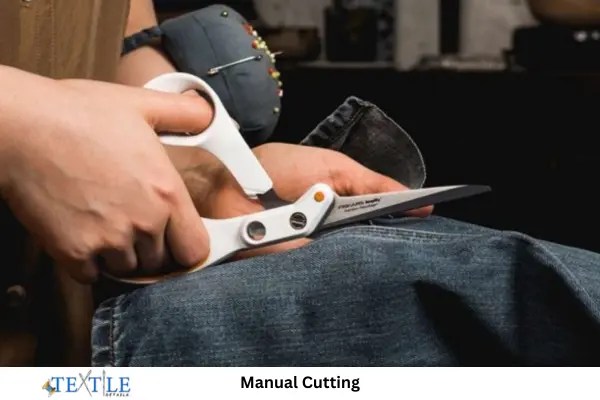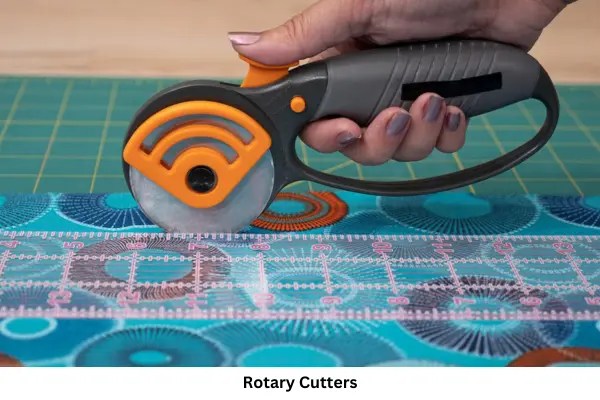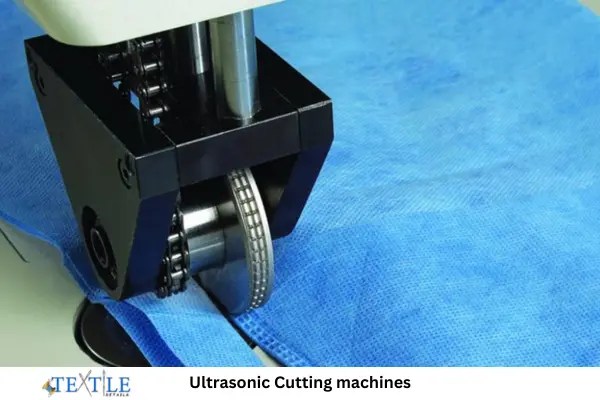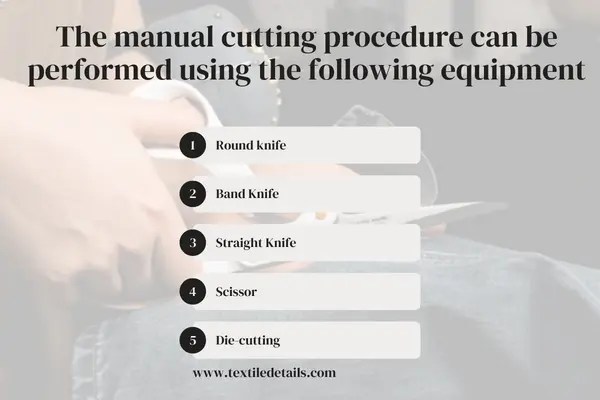Ever wondered how your favorite clothes take shape? What turns rolls of fabric into perfectly crafted garments? How does this backstage magic happen, and what makes each cut a step toward wearable art? This is more than simply a procedure; it’s an adventure where interwoven threads, expertly crafted by artists, transform visions into wearable realities.
Table of Contents
What is Fabric Cutting?
Fabric cutting, the foundation of textile production, is a precise dance of imagination and precision that shapes the very soul of fashion from raw fabric into perfect pieces. This important step includes a wide range of techniques specific to various types of fabric, directing the smooth assembly of clothing from the point of receipt to the careful conditioning, spreading, and marking on cutting tables.

The cutting department is given priority by garment makers, who also place a strong emphasis on industrial engineering and marker-making to address waste issues and improve overall profitability in the contemporary apparel industry. Fabric cutting is considered the first stage of garment production, and it requires accuracy to ensure smooth pattern matching, stitching, and assembly. As such, the cutting room is the beating heart of the business, with each cut providing a valuable contribution to the development of high-quality products.
Cutting objectives
What goals drive fabric cutting in the textile industry? Are the goals centered on precision, waste minimization, or efficiency maximization? The cutting process aims to achieve accurate patterns, eliminate material waste, and improve overall efficiency, resulting in high-quality clothes while being sustainable in the manufacturing process.
Advantages of Cutting in Production
The advantages of cutting in production are diverse and crucial for the efficiency and quality of the manufacturing process.

1. Optimised Material Usage
2. Precision for Accurate Patterns
3. Workflow Streamlining
4. Utilisation of Advanced Technologies
5. Cost-Effectiveness
6. High-Quality Finished Products
7. Meeting Quantity and Quality Demands
8. Cornerstone for Excellence
Requirements of fabric cutting
The primary objective of cutting is to split cloth portions into replicas of the pieces in the marker plan. To accomplish this goal, several requirements must be met:
- Precision cut with clean edges.
- Infused edges.
- Support from the lay
- Consistent cutting
Step-by-Step Production process in the cutting room
Learn More: Flowchart of Cutting Room
- Design and Pattern Making: The fabric-cutting process begins with the production of a design, which is followed by pattern making. Patterns are essentially templates for various components of a garment or textile product. These patterns are meticulously made to ensure optimum fit and style, taking into account elements like size, shape, and fabric type.

- Fabric Selection: Choosing the appropriate fabric is crucial. Fabric selection affects the cutting method, as different materials, from delicate silks to strong canvases, have varied cutting requirements. Texture, stretchability, and thickness are important factors to consider throughout the selection process.
- Laying and Spreading: The cloth is put out on the cutting table to ensure it is wrinkle-free and properly aligned. Spread the fabric evenly to ensure uniformity and precision in cutting. This procedure frequently involves spreading numerous layers of fabric to allow bulk cutting.
- Placement and Marking of the Pattern: After laying out the cloth, the following step is to mark it with the designs. Pattern elements are carefully placed on the fabric to maximize fabric consumption and save waste. Markers, often created with CAD programs, direct the cutting process and ensure precision.
- Cutting: This is the area where the fabric is cut. A variety of cutting instruments and equipment are employed, depending on the specifications. The choice of equipment relies on the size of the project and the type of fabric, ranging from manual scissors for minor jobs to sophisticated fabric-cutting machines such as Eastman cutters for huge volumes.
- Sorting and Quality Check: Following cutting, every component is checked for uniformity and quality. This stage guarantees that every component satisfies the design requirements and is flawless. Following approval, the cut pieces are arranged in order of where they will go in the assembled final product.
- Preparation for Sewing: The last stage entails getting the cut components ready for assembly or sewing. This involves marking notches, seam allowances, and other pertinent information that helps in sewing.
What machines are used to cut fabric?
Fabric cutting, a crucial step in the manufacturing of textiles and clothing, uses a variety of techniques, each supported by unique technology and appropriate for a particular use. We’ll go into great detail about these techniques, emphasizing their usefulness and technology components.
1. Manual Cutting
Scissors: The most traditional way, using hand-operated scissors to achieve precision and control. This method is great for custom tailoring, which requires intricate cuts and meticulous attention to detail.

Advantages:
- Unlike fabric-cutting machines, which are stationary, scissors are portable and can be used anywhere, making them perfect for small-scale work.
- Scissors are a less expensive cutting tool than a fabric cutting machine.
- Scissors provide the user with complete control over the cutting process, allowing for modifications based on material or design specifications.
- Scissors are simple to maintain and do not require the frequent upkeep or technical knowledge that fabric-cutting machines do.
Disadvantages:
- Cutting with scissors takes longer, particularly for straight lines.
- Using pattern weights and scissors can result in distortion since the fabric lifts as you cut.
- It can result in jagged edges, especially if you use blunt scissors.
- Scissor sizes may vary depending on the work at hand.
- Cutting may be difficult for people who use their left hand.
2. Rotary Cutters:
Compared to scissors, rotary cutters—which have a wheeled blade—are quicker and more effective. Because they can readily cut straight lines or delicate curves on both thin and thick textiles, they are frequently used in quilting and handicrafts.

Advantages:
- Faster than scissors for the majority of applications.
- Minimizes fabric movement by not lifting the fabric during cutting.
- Use weights instead of pins to secure the fabric.
- Excellent for straight lines.
- Blades that can be changed.
Disadvantages:
- Precision cutting of delicate or fiddly pieces can be difficult with a rotary cutter because of its design.
- Cutting through more than two layers of fabric might be difficult using a rotary cutter, although conventional scissors can handle up to four layers.
- Additional tools required include a quilting ruler, new blades, and a cutting mat.
- Necessary to dispose of the used blades.
3. Die Cutting machines:
Die cutting is a fabrication technique that involves cutting, shaping, and cutting stock material with the use of specialized equipment and tools. Die cuts are used in printing to provide unique designs and forms for labels. Die cutting is a standard in mass manufacturing because of its unique technology, which uses pressure and sharp edges to cut through numerous layers of fabric.

Advantages:
- Clearly, die-cutting is more economical and environmentally friendly than other cutting techniques since it wastes less material surrounding the shapes
- Since just one machine is required, the procedure is typically both economical and time-efficient.
- Even a manual die cutter can create shapes faster than any other method since it can manufacture shapes with a single punch, allowing for the rapid production of similar forms.
- You may create rather intricate shapes by making numerous cuts and layers
- Die-cutting creates wonderful, artistic forms and folds in plastic and cards.
Disadvantages:
- If you only require a little volume and don’t use this procedure frequently, it is less cost-effective.
- If you are working with thicker materials, it might not be the best technique.
- The rotary machine has restrictions in terms of length, height, and width, so it might not be the best option if you want large-format printing for things like workplace signs or store branding.
4. Band Knife Cutting machines:
A band knife blade is a thin steel band that moves continuously along rubberized guide wheels. A straight knife machine’s band is often narrower than its blade. As a result, it provides superior cutting accuracy.

Advantages:
- The knife-cutting machine is appropriate for any sort of line.
- It has higher productivity for fewer items.
- It is also ideal for cutting small pieces of fabric.
- The automated grinder grinds the knife instantly when in-band knife-cutting mode.
- It is suitable for cutting extremely sharp curves.
- Band knife cutting m/c cuts the fabric at a 90° angle to the lay.
- The air blower helps to reduce fabric weight, which improves fabric movement.
Disadvantages:
- The table’s length makes it unsuitable for large components.
- The workload is substantial since the machine is stationary and the fabric is mobile.
- Running costs are higher.
- It is necessary to fix space.
- It is not possible to cut fabric directly.
5. Straight Knife Cutting machines:
Straight knife cutting employs a sharp vertical blade capable of cutting through multiple layers of fabric, providing a straightforward yet efficient technique known for its speed and versatility. Widely favored in garment manufacturing, this method is valued for its ability to manage large quantities of fabric with ease.

Advantages:
- The machine can cut a huge number of fabric layers due to the long length of the knife and the motor’s r.p.m. So productivity is high.
- Automatic grinding.
- Automatic lubrication.
- Comparatively low priced.
- Wheels allow for easy mobility.
- Suitable for both straight and curved lines.
- It can cut higher curve lines than a circular knife.
- Fabric can be cut at any angle.
Disadvantages:
- The machine’s rapid speed increases the chance of harm.
- A bad knife could tear a layer of fabric.
- Knife deflection caused by motor weight may result in defective parts.
- There is a significant chance of operator bodily harm.
- A new knife is needed.
6. Laser Cutting machines:
Laser cutting has become increasingly common for cutting materials such as metal, plastic and mostly wood. This highly expensive machine is used by a wide range of industries, including automotive and medical device manufacturing as it provides exceptional accuracy and precision.

Advantages:
- Cutting and sealing edges simultaneously eliminates fraying and reduces the lint of materials.
- Cutting single or multilayered materials swiftly and consistently without physical contact reduces faults caused by wrinkling and tugging.
- Accurate maneuvering enables detailed cuts, perforation, and engraving.
Disadvantages:
- Energy usage is not a fix. It depends on the piece or amount you want to cut. It may occasionally consume a significant amount of energy.
- Human involvement is minimal, but humans occasionally come into touch with laser beams during repairs or inspections.
- The production pace may vary based on the material and thickness of the sheet.
- Every metal, including copper and aluminum, cannot be sliced with a laser machine.
- Improper laser machine settings might result in burns.
- Expensive in comparison to other sheet-cutting processes.
7. Waterjet Cutting Machine
A waterjet cutter is an industrial machine composed of three major components that use a high-pressure stream of water to erode a tiny line into a piece of material. To boost cutting power, a granular abrasive is introduced to the water jet based on the density and composition of the material, such as titanium. The abrasive is introduced at the nozzle, allowing for an easy switch between water-only and abrasive cutting.

Advantages:
- Use of “green technology” – The waterjet cutter produces no hazardous waste and, with a small kerf, aids in the recycling of scrap metal. The cutter uses extremely little water due to its closed-loop design.
- Cuts practically any material – Unlike other cutters, the waterjet cutter can cut almost every material or product that a standard cutter can. Waterjet can cut through traditional difficult materials such as bulletproof glass, stone, metals, and even reflective or uneven surfaces.
- Extremely Accurate – Waterjet cutters may achieve incredibly detailed cuts or 3-D.
- Water cutters do not overheat the areas next to the cutting space, therefore these components remain undamaged and uncompromised.
Disadvantages:
- Water jet machining cannot handle thicker materials.
- The initial investment is substantial.
- It takes significantly longer than typical methods.
8. Ultrasonic Cutting machines:
These devices cut and seal the edges of synthetic materials using high-frequency vibrations. Applications with frayed edges, including the production of synthetic fabrics and non-woven materials, greatly benefit from this technology.

Advantages:
- Higher initial cost when compared to other older cutting procedures.
- Less effective with thicker fabrics.
- Ultrasonic blades may wear and need to be replaced on a periodic basis.
- There is some difficulty in setup and maintenance.
- Not ideal for cutting hard or brittle materials.
- Consumes energy, increasing operational costs.
- There may be restrictions in adjusting the cutting depth.
- Produces some noise while operating.
- To achieve best performance, experienced operators are required.
Disadvantages:
- Higher initial cost when compared to other older cutting procedures.
- Less effective with thicker fabrics.
- Ultrasonic blades may wear and need to be replaced on a periodic basis.
- There is some difficulty in setup and maintenance.
- Not ideal for cutting hard or brittle materials.
- Consumes energy, increasing operational costs.
- There may be restrictions in adjusting the cutting depth.
- Produces some noise while operating.
- To achieve best performance, experienced operators are required.
Different Methods of Fabric Cutting
- Manual cutting
- Semi-automatic cutting machine
- Fully automatic cutting machine
Completely manual process
Manual fabric cutting is a conventional method of cutting cloth with hand instruments instead of automated machines. In this process, skilled workers, known as cutters or fabric cutters, utilize a variety of instruments to cut the cloth according to particular designs or templates.

The manual cutting procedure can be performed using the following equipment:
- Round knife,
- Band Knife,
- Straight Knife,
- Scissor,
- Die-cutting,
- Drill.
Advantages of the Manual Cutting Method:
- Cutting is an easy operation.
- An educated workforce is not required.
- The low-cost knife is sufficient to cut the fabric.
- Low maintenance costs.
Disadvantages of the Manual Cutting Method:
- This is a slow procedure.
- Not suited for large-scale production.
- Cutting speed cannot be adjusted.
- The accident is really serious.
- Labor costs are higher than with computerized cutting methods.
Automated Cutting Method
Automated fabric cutting is a modern form of fabric cutting that is used in a variety of sectors, especially mass production, textile and garments industry etc. This approach uses computer-controlled cutting machines to automate the cutting process using digital patterns and templates.

The computerized cutting procedure can be performed with the following equipment:
- Straight knife cutting,
- Water Jet Cutting,
- Laser beam cutting,
- Plasma torch cutting.
Advantages of Automated Cutting Machine:
- The cutting process is rapid.
- Designed for large-scale production.
- Cutting speed can be set.
- The accident is fairly minor.
- It is unnecessary to use a marker.
- Fabrics can be cut 7-8 times faster than the manual cutting process.
Disadvantage of the Automated Cutting Method:
- Increased maintenance expenses.
- Skilled and educated employees are required.
- Such pricey equipment.
- If the correct disk is not loaded into the computer, an error message will be displayed.
Methods of Computerised Fabric Cutting
There are numerous methods within computerised fabric cutting, each with their own distinct applications:
- Laser Cutting: Cuts cloth with a laser beam, which is perfect for complicated patterns and synthetic fabrics.
- Knife Cutting: The fabric is cut using a sharp blade that is controlled by a computer. It works well with many different kinds of materials.
- Water Jet Cutting: Uses high-pressure water to protect fragile materials from harm.
- Plasma Cutting: This method involves utilizing a plasma torch to cut high-strength materials such as leather or thick canvas.
Process of Computerised Fabric Cutting
Computerized fabric cutting uses computer-aided design (CAD) software to control the cutting process. The essential steps are:
- Design input: Patterns are created or imported into CAD software.
- Digital Layout: To maximize material utilization and avoid waste, the software arranges the design on a virtual version of the cloth.
- Machine Setup: Place the fabric on the cutting table and program the machine with the cutting specifications.
- Precision Cutting: A computer-controlled blade or laser cuts the fabric exactly according to the computerized pattern.
Role of Computer in Fabric Cutting Room
The use of IT in the cutting room is widespread across the industry. Computer-aided pattern-making, grading, and marker-making are widely used in production. The Apparel Computer-aided design (CAD) technology makes the cutting department’s job easier while also saving money and time. The role of computers in the fabric cutting room has significantly evolved with the advent of technology. Computers play a crucial role in improving efficiency, accuracy, and overall productivity in fabric-cutting operations. Computers also store digital pattern libraries, which can be easily retrieved for later use. Automated nesting algorithms optimize pattern placement on fabric to reduce waste. Computer-generated cutting instructions guide automated cutting machines, resulting in accurate and efficient cutting. Integration with ERP systems enables production planning, inventory coordination, and scheduling. Computers allow quality control through vision systems, and data analytics aid in performance evaluation. Furthermore, computers provide user interfaces for operators, allowing for real-time monitoring and control, while networking allows for remote supervision of cutting machines. The total consequence is better efficiency, reduced waste and enhanced efficiency in the fabric cutting process.
Which Fabric Cutting Method is Best?
The “best” fabric-cutting method is determined by a variety of parameters such as fabric type, design complexity, production volume, and budget. Laser cutting, for example, is perfect for delicate designs on synthetic textiles, but die cutting is better suited for large-scale manufacture of simple shapes. Ultrasonic cutting is recommended for synthetic materials that require edge sealing. Straight knife cutting is the most frequent fabric-cutting method used in mass garment production. This method maintains a balance between efficiency, diversity, and cost-effectiveness, making it appropriate for a variety of materials and patterns. Its widespread use in the industry is due to its capacity to efficiently handle high volumes and a wide range of fabric kinds.
Quality issues in cutting
The quality of work that leaves the cutting room is decided by how accurate the cut fabric parts are to the pattern; how smooth or rough the cut surface is; material or fabric faults in the cut fabric parts; and shade variances between cut fabric pieces within a bundle.
Common cutting errors:
- Miss cut, running shade, matching plies.
- Numbering & Bundling
- Fabric bowing or notch marks.
- Narrow items.
- Rugged cut Fabric style
- Measurement Updown
- Leaning Tension Loose
- Wrong patterns
- Cutting a wrong size ratio
Solutions for cutting errors:
Cutting errors can occur in a variety of production processes, and correcting them quickly is critical for maintaining product quality and reducing material waste. Here are some popular fixes for cutting errors:

- Regular Maintenance: Make sure that cutting equipment, such as blades, dies, or laser heads, is properly maintained and repaired regularly. Dull or broken cutting tools might result in inaccurate cuts.
- Operator Training: Operators should be well-trained to ensure they understand the equipment, operations, and the need for precision in cutting. Skilled operators are less prone to make mistakes
- Quality Control Measures: Implement effective quality control procedures to uncover cutting problems early in the process. This may include visual inspections, measurements, or the usage of automated inspection systems.
- Error Tracking and Analysis: Create a system to track and analyze cutting errors. Identify patterns or recurring problems to address the underlying causes and take corrective measures.
- Advanced Cutting Technology: Consider upgrading to more advanced cutting technology, such as computerized or automated cutting machines. These systems generally include features that improve precision and reduce errors.
- Material Inspection: Before cutting, thoroughly inspect the material for any faults, abnormalities, or thickness variations that may influence cutting accuracy.
So here we are, riding the rollercoaster of fabric cutting – a voyage more thrilling than discovering a hidden pocket in your favorite pair of jeans. From the humble beginnings of scissor symphonies to the dazzling light shows of laser and water jet cutters, it’s been a fabric-fueled journey.
Consider fabric cutting to be the finest form of textile production, with precision strutting down the runway alongside invention and expertise as the designer constructing the next trend. It’s more than just cutting; it’s about shaping the soul of what we wear, enveloping us in a shroud of craftsmanship and technical wonder
Fabric cutting, whether it’s generating delicate designs or handling large production numbers, is a monument to human inventiveness and technology innovation, influencing the very fabric of our daily lives.
Reference List
- Jonathan Schlick. Techni Waterjet. What is Fabric and Textile Cutting? [Internet]. 2023. [cited 2024 Jan 23]. Available from: https://www.techniwaterjet.com/fabric-textile-cutting/
- Abu Sayed. Textile Apex. What is Fabric Cutting | Requirements and Methods of Fabric Cutting [Internet]. 2015. [cited 2024 Jan 24]. Available from: https://textileapex.com/what-is-fabric-cutting-requirements-and-methods-of-fabric-cutting/#google_vignettek
- Mayedul Islam. Merchandising online library for merchandiser. Methods of Fabric Cutting [Internet]. 2015. [cited 2024 Jan 23]. Available from: https://garmentsmerchandising.com/methods-of-fabric-cutting/#google_vignette
- Textile Blog. Garments fabric cutting: definition, requirements and methods [Internet]. 2020. [cited 2024 Jan 23]. Available from: https://www.textileblog.com/garments-fabric-cutting-definition-requirements-and-methods/#google_vignette
- Prasanta Sarkar. Online Clothing Store. How to deal with cutting mistakes in garment manufacturing? [Internet]. 2014. [cited 2024 Jan 23]. Available form: https://www.onlineclothingstudy.com/2014/03/how-to-deal-with-cutting-mistakes-in.html#google_vignette
- Textile Industry. Cutting defects in garments industry and their causes [Internet]. 2015. [cited 2024 Jan 23]. Available from: https://www.textileindustry.net/cutting-defects-in-garments-industry/
- Suntech Textile Machinery. What Is the differences in fabric cutting methods? [internet]. 2023. [cited 2024 Jan 23]. Available from: https://www.suntech-machine.com/news/what-is-the-differences-in-fabric-cutting-methods-472.html#:~:text=Laser%20cutting%20is%20one%20of%20the%20thermal%20cutting%20methods.&text=As%20a%20brand%2Dnew%20processing,and%20high%20degree%20of%20automation.
- Davant Indy Blog. What are the pros and cons of die cutting? [Internet]. 2018. [cited 2024 Jan 23]. Available from: https://www.davantindy.com/what-are-the-pros-and-cons-of-die-cutting/
- Sino Textile. Ultrasonic fabric cutting [Internet]. 2021. [cited 2024 Jan 23]. Available from: https://www.sinotextilemachinery.com/weaving-related-machinery/ultrasonic-fabric-cutting.html
MD. ZUBAER JISAN
Content Writer
Textile Details
Apparel Engineering Dept.

Jisan Zubaer is majoring in textile engineering at DWMTEC and exploring the fields of material science, wearable technology, nanomaterials, and smart textiles. a sustainability enthusiast who wants to combine the best aspects of engineering with sustainable fashion.
Presently working as a content writer, Jisan’s love of books and articles gives his diverse profile more nuance. As a project developer, he works to integrate sustainability and innovation into the future.

